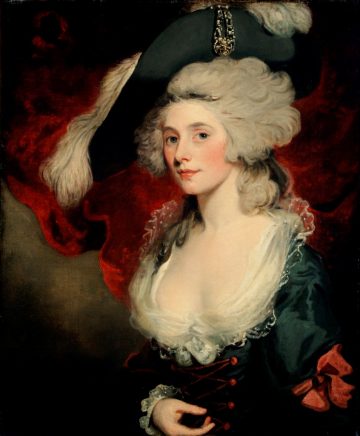

Project Description and Scope
No matter how we choose to define and to date what we usually call the English Romantic period, the poetry that was produced during that volatile era involved far more than just five (or six) canonical male poets familiar from traditional canonical literary history. The period saw the publication of literally thousands of volumes of poetry, written by women and men alike. Often these poets knew one another's work; many knew one another personally as well. Therefore, when we look closely we may recognize how frequently, and in how very informed a fashion, the poems of this period engage in deliberate and complex intertextual conversations, conversations in which the poetry's readers among the general public themselves were often very knowledgeable participants. As the complex intertextuality of Romantic poetry – and indeed of Romantic discourse in general – has become increasingly apparent to scholars working in the field, revisionist studies of English Romanticism have, especially in the last decade or so, yielded a dramatically altered picture of the Romantic period and of its poetry, a picture that continues to change and to evolve as more and more of the era's literary production is recovered, examined, and evaluated.
Even the definition of a Romantic "period" has become an issue in recent years. Some 18th-century scholars have suggested that what we call the "romantic period" simply be added to what those scholars then call "the long eighteenth century." Others, working from the other end of the timeline, have suggested that in many respects the Victorian era begins not with Victoria's coronation in 1837 but rather with the accession of her uncle (the Prince of Wales) to the position of Prince Regent in 1811. Among Romanticists, the counter-argument to both these propositions is that the Romantic era is a time of volatility and change whose roots begin to be apparent already at about the time of Charlotte Turner Smith's birth in 1749 and whose terminus coincides with the death of William Wordsworth in 1850. Probably a reasonable compromise involves at least tentatively identifying the "Romantic period" in Great Britain with the period extending from about 1775 to about 1835, or some sixty years. Elements of what is typically characterized as Romanticism appear both before and after those dates, of course, just as elements of both Enlightenment and Victorian ideology are to be found throughout these sixty years.
This project is the product of Stephen Behrendt's Spring 2018 course: English 331: "British Women Poets of the Romantic Period." As part of their work in the course, students were invited to select one complete volume published by a British woman poet from what is usually regarded as the Romantic period (c. 1775-1835). For each volume of a poet's work selected, the assignment was to read the volume in its entirety and to write a relatively brief descriptive critical essay evaluating that volume, its characteristic features, themes, and ideological "agendas," as far as is evident from that volume alone. In addition, each student also composed a brief biographical sketch of the author. In many cases little is known about the poets, and so those biographical sketches are in some cases very sketchy indeed and often involve inferences from the poetry itself, owing to the scarcity of definitive factual information. Students also set out to locate and transcribe as many contemporary reviews of their volumes as were accessible through the digital, online and print resources available at the University of Nebraska. Finally, each student prepared a bibliography of publications by the chosen poet. The results of this project are gathered on this website.
Objectives
Our intention has been to involve ourselves in genuinely hands-on fashion in the work of recovery and reassessment of the lives and works of historically neglected or marginalized women writers whose contributions to British literature and culture deserve fuller acknowledgment and assessment within the emerging new landscape of British Romantic-era poetry, literature, and culture. Our aim is to make products of our collective work available and accessible for the use of other scholars, worldwide, who may find this information interesting and useful in their own scholarly projects.
Authors and Works
Poetry
-- on this site
Barnes, Esther. The Disengaged Fair. 1792.
Bath, Elizabeth. Poems, on Various Occasions. 1806.
Bristow, Amelia. The Maniac, a Tale; or, A View of Bethlem Hospital [etc.]. 1810.
Browne, Mary Anne. Mont Blanc, and Other Poems. 1827.
Candler, Ann. Poetical Attempts. 1803.
Dacre, Charlotte [Charlotte King], Tales of Helicon. 1798.
Dark, Mariann. Sonnets and Other Poems. 1818.
Evance, Susan. Poems. 1808.
Godwin, Catherine Grace. The Wanderer's Legacy. 1829.
Harvey, Jane. Poems on Various Subjects. 1797.
Landon, Letitia Elizabeth. The Golden Violet . . . with Other Poems. 1827.
Lickbarrow, Isabella. Poetical Effusions. 1814.
McMullan, Mary Anne. The Naiad's Wreath. 1816
Moody, Elizabeth. Poetic Trifles. 1798.
Norton, Caroline E. The Sorrows of Rosalie. A Tale; and Other Poems. 1829.
Opie, Amelia. Poems. 1802.
Pagan, Isabel. A Collection of Songs and Poems on Several Occasions. 1803.
Porter, Anna Maria. Ballad Romances, and Other Poems. 1811.
Sargant, Jane Alice. Sonnets and Other Poems. 1817.
Young, Mary Julia. Genius and Fancy; or, Dramatic Sketches: With Other Poems on Various Subjects. 1795.
-- linked through this site
Prose Fiction / Novels
-- on this site
-- linked through this site